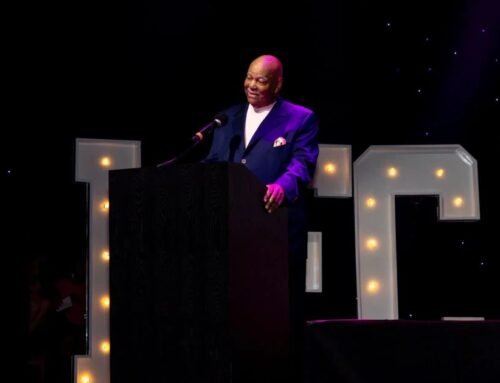Twelve years. According to scientists, that’s how long the world has before climate change becomes irreversible.
Around the globe, millions of people turned their attention to the urgency of that prediction and took to the streets Friday to call for action.

Cliff Grassmick/Staff Photographer
Matt Bedeaux, one of the organizers of the climate strike at the University of Colorado Boulder, speak to the crowd Friday.
Boulder County residents young and old joined protesters around the world in what may be the largest climate strike in history. Between two strikes in the Boulder — one on the University of Colorado Boulder’s Norlin Quad and another at 28th and Pearl streets in front of Starbucks and Whole Foods — well over 500 people participated.
Arranged speakers combined with impromptu chants in the spirit of collective unity. Protesters held homemade signs with sayings like “Mother Nature needs a hug” and yelled slogans in between speakers. On the CU Boulder campus, strikers yelled in tandem, “When the planet’s under attack, what do we do? Stand up, fight back!”
The strikes specifically gave voice to the fears of younger generations, acknowledging they will have to bear the brunt of effects of climate changemore so than their elders. The CU Boulder strike, which numbered close to 500, was organized by students, with speakers of all ages stepping up to the megaphone. Nine-year-old Nico lightened up the mood of the strike with a few jokes, before sharing that his school never needed air conditioning until recently, and now it doesn’t have any.
“My mom says when I’m in a crowd of new people, I should talk about climate change, because it’s a real icebreaker,” he said.
Attendees included students from local high schools, middle schools and elementary schools, ditching class to demand a better future.
“This is a lot more important than any math test,” said Lola Donofrio, a participant in SPEAK, a girls’ empowerment program. “If we do not have a planet, we do not have a future.”
Protesters from all generations showed up to address climate change. Betty Ball, co-administrator at Rocky Mountain Peace and Justice Center, is a longtime Boulder resident. She showed up at the 28th and Pearl streets strike. Though she’s been fighting for climate justice for decades, with mixed results, she said she’s encouraged by the movement.
“Thank goodness people have been persistent,” Ball said. “And thank goodness for young people.”
One cause, many approaches
Though all of the strikes, locally and worldwide, focused on addressing climate change, each of the local rallies took a slightly different approach. At CU Boulder, student leaders demanded the school’s regents agree to four measures to demonstrate the university’s commitment to being a sustainable leader. Those include the university declaring a climate emergency, something Boulder did in July, committing to 100% renewable energy by 2050, and more transparency on how the university’s endowment is invested.
Student demands also include Regent Lesley Smith’s proposal to switch the whole CU system to more sustainable practices. Smith, formerly a climate scientist at the Cooperative Institute for Research in Environmental Sciences, spoke briefly at the end of the rally.
Across town at the intersection of 28th and Pearl streets, about 100 strikers asked Starbucks and Whole Foods Market to implement zero-waste practices. According to Eco-Cycle, more than 40% of emissions contributing to climate change come from physical items and food, known as consumption. Laurie Dameron, organizer for this strike and a longtime sustainability advocate, said part of the struggle is getting people to care enough to make changes, and for them to find time to get active.
“People just want to be able to feed their kids,” Dameron said. “And isn’t that ironic? What kind of future will their kids have?”
Day of anger, hope
The strikes included a lot of frustration at the urgency of climate change. Holly Martin brought her two kids, Mozley and Hazel, to the CU Boulder strike. The kids held handmade signs, inspired by a documentary about sea turtles they recently watched.
“It’s sad that we have to be out here, and it’s scary that there’s such a desperate need to do something soon,” Martin said. “But I’m hopeful that we can still make a change.”
Still, many protesters found hope. Paul Rastrelli, co-organizer of the campus event, said people often care about climate change, but need something to motivate them to act. All it took was for him to register the event, and pretty soon he was contacted by others wanting to help out.
“I believe in our potential to create change, do you?” Rastrelli asked the crowd.
Matt Bedeaux, the other co-organizer of the CU Boulder event, said he was encouraged by the way the event grew. He said online RSVPs quadrupled from about 100 to over 400 in the course of just a few days.
“Today it feels good to be here among friends who want to transform the world,” Bedeaux told the crowd.

Cliff Grassmick/Staff Photographer
Mike MacFerrin wears winter clothing to make his point Friday at the climate strike at the University of Colorado Boulder’s Norlin Quad.






Leave A Comment